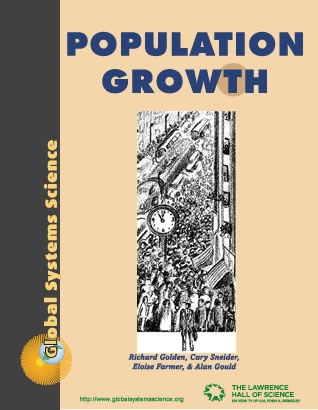PG2C. Stay Current—Patterns in Populations

Staying current for Chapter 2
2019-10-11. Giant reptiles once ruled Australia. Their loss sparked an ecological disaster. By John Pickrell, Science Magazine. Excerpt: BRISBANE, AUSTRALIA—Saber-toothed cats, short-faced bears, and other ferocious mammals were the top predators of the ice age across most of the world. But not in Australia. Here, reptiles ruled: land-living crocs, monstrous snakes, and enormous relatives of the Komodo dragon, according to a study presented yesterday at the annual meeting of the Society of Vertebrate Paleontology here. The disappearance of these animals, the researchers argue, made room for mammalian predators to take over and set the stage for a massive extinction crisis that accelerated when Europeans arrived 200 years ago. “Between the expansion of agriculture in Australia, which changed the landscape, and the predators that we brought in, there was no way for native animals to escape,” says Kenny Travouillon, a paleontologist at the Western Australian Museum in Perth who was not involved in the study. …Most of these large reptiles, and the only large native mammal carnivores, had finally vanished by about 40,000 years ago along with Australia’s other megafauna, possibly because of changing climate. That left only small mammalian predators like the dog-size Tasmanian tiger and the even smaller Tasmanian devil to step into the role of apex predators across the continent. Price suggests these left ecosystems out of kilter. Things got worse about 4000 years ago when people introduced the dingo, a placental mammal from Asia that was a more efficient hunter than the Tasmanian tiger or devil and quickly outcompeted them. But it was the European introduction of the cat and the red fox in the past 200 years that has caused the most damage. These animals devastated small marsupials, which had evolved alongside the reptiles but were not used to dealing with more intelligent and effective placental mammal predators….
2018-04-30. A Population That Pollutes Itself Into Extinction (and It’s Not Us).By Natalie Angier, The New York Times. Excerpt: …scientists have discovered that just as a big holiday sale can quickly crush the wisdom of a human crowd underfoot, so can a microbial village be infected with mass stupidity, to devastating effect. Jeff Gore, a biophysicist at the Massachusetts Institute of Technology, and his colleagues Christoph Ratzke and Jonas Denk, report that when a sample of Paenibacillus sp., a soil bacteria, is fed a diet of glucose and nutrients in the laboratory and allowed to grow at will, the microbes end up polluting their local environment so quickly and completely that the entire population soon kills itself off. In essence, the researchers said, the microbes commit “ecological suicide.” [https://www.ncbi.nlm.nih.gov/pubmed/?term=ecological+suicide+in+microbes][ The study was published in April in Nature Ecology and Evolution. “The effect is so dramatic,” Dr. Gore said. “You have an exponential growth of the population followed by exponential death.” Within 24 hours of the onset of the death spiral, he said, “no viable cells were left in the entire culture.”It’s not that the microbes had exhausted their resources: Food remained to feed on. But in gorging heedlessly on the glucose bounty, each bacterium had secreted a steady flow of acidic waste into the culture medium, until the ambient pH level had plunged lethally low…. https://www.nytimes.com/2018/04/30/science/microbes-ecological-suicide.html
1 November 2007. Is the ocean carbon sink sinking? RealClimate website. –David. Excerpt: The past few weeks and years have seen a bushel of papers finding that the natural world, in particular perhaps the ocean, is getting fed up with absorbing our CO2… evidence that thehypothesized carbon cycle positive feedback has begun.
…If changing climate were to cause the natural world to slow down its carbon uptake, or even begin to release carbon, that would exacerbate the climate forcing from fossil fuels: a positive feedback.
The ocean has a tendency to take up more carbon as the CO2 concentration in the air rises, because of Henry’s Law, which states that in equilibrium, more in the air means more dissolved in the water. Stratification of the waters in the ocean, due to warming at the surface for example, tends to oppose CO2 invasion, by slowing the rate of replenishing surface waters by deep waters which haven’t taken up fossil fuel CO2 yet.
… Le Quere et al. [2007] … find that the Southern Ocean has begun to release carbon since about 1990….
A decrease in ocean uptake is more clearly documented in the North Atlantic by Schuster and Watson [2007]. They show surface ocean CO2 measurements … rose by about 15 microatmospheres
…The warming at the end of the last ice age was prompted by changes in Earth’s orbit around the sun, but it was greatly amplified by the rising CO2 concentration in the atmosphere. The orbits pushed on ice sheets, which pushed on climate. The climate changes triggered a strong positive carbon cycle feedback which is, yes, still poorly understood.
Now industrial activity is pushing on atmospheric CO2 directly. The question is when and how strongly the carbon cycle will push back.
January 2007. Exponential growth applet – interactive. See also “logistic growth” http://www.otherwise.com/population/logistic.html
17 May 2002. Exponential Growth and The Rule of 70… explains the concepts of exponential growth and doubling time – the time it would take a population to double if it were growing exponentially at a constant rate. Throughout human history, human population has generally grown in an exponential manner, and discussion of exponential doubling times has been appropriate….

